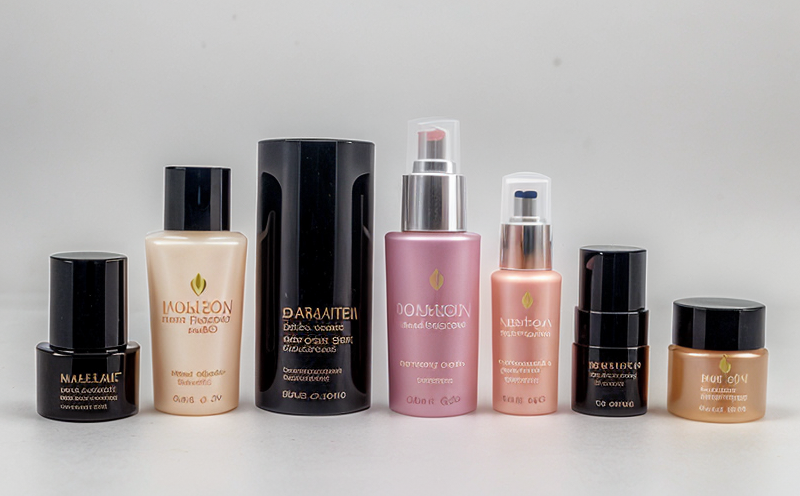Migration Testing of Stabilizers in Cosmetic Packaging
Migration testing is a critical step in ensuring the safety and regulatory compliance of cosmetic products. When it comes to stabilizers used in cosmetic packaging, the potential for migration into the product can have significant implications on consumer health and safety.
The primary concern with stabilizers migrating from packaging into cosmetic products lies in their potential to introduce harmful substances that could affect the quality and integrity of the final product. This testing ensures that any stabilizer used in direct contact with cosmetics does not exceed the acceptable migration limits set by regulatory bodies such as the European Union's Regulation (EC) No 10/2011.
Migration from packaging materials can occur through various mechanisms including diffusion, dissolution, and leaching. The specific stabilizers of concern in cosmetic packaging include antioxidants like butylated hydroxytoluene (BHT), preservatives such as methylparaben, and colorants among others. These substances must not only meet the safety standards for direct application to skin or mucous membranes but also ensure that their migration into the product does not exceed permissible limits.
Testing for migration involves exposing the packaging material containing the stabilizer to a controlled environment designed to simulate real-world conditions, such as temperature and humidity. The test specimens are then analyzed using advanced analytical techniques like Gas Chromatography-Mass Spectrometry (GC-MS) or Liquid Chromatography-Mass Spectrometry (LC-MS). These methods provide precise quantification of the migrated compounds, allowing for accurate determination whether they fall within the acceptable limits.
Compliance with migration testing is not only essential for meeting regulatory requirements but also for protecting brand reputation and maintaining consumer trust. Non-compliance can result in product recalls, legal action, and damage to brand image. Given these critical considerations, it is imperative that laboratories conducting such tests adhere strictly to international standards like ISO 21594:2013, which specifies the test methods for determining the migration of substances from packaging into food contact materials.
Eurolab's expertise in this area ensures that our clients receive accurate and reliable results. Our state-of-the-art facilities and experienced scientists guarantee compliance with all relevant standards and regulations while providing insights into potential risks associated with specific stabilizers used in cosmetic packaging.
- Comprehensive Analysis: Eurolab uses advanced GC-MS/LC-MS techniques to analyze migrated substances accurately.
- Regulatory Compliance: Our tests ensure that results meet international standards like ISO 21594:2013 and EU Regulation (EC) No 10/2011.
- Precision: Using cutting-edge technology, we provide precise quantification of migrated substances in cosmetic packaging.
The importance of migration testing cannot be overstated. It ensures that the products you bring to market are safe and compliant with all relevant regulations. By choosing Eurolab for your migration testing needs, you can rest assured knowing that each test is conducted rigorously and meets the highest standards.
Eurolab Advantages
At Eurolab, we pride ourselves on providing unparalleled service excellence in all facets of our work. Our commitment to quality, accuracy, and reliability sets us apart from other laboratories in the industry.
- Expertise: Our team consists of highly experienced scientists who possess extensive knowledge and skills necessary for conducting accurate and precise migration testing.
- Technology: Equipped with state-of-the-art equipment, Eurolab ensures that all tests are conducted using the latest technology available in the field.
- Rigorous Quality Control: Our processes undergo stringent quality checks at every stage to ensure accuracy and consistency of results.
- Comprehensive Reporting: We offer detailed reports providing not just numerical data but also interpretative insights, helping our clients understand the implications of their test results.





